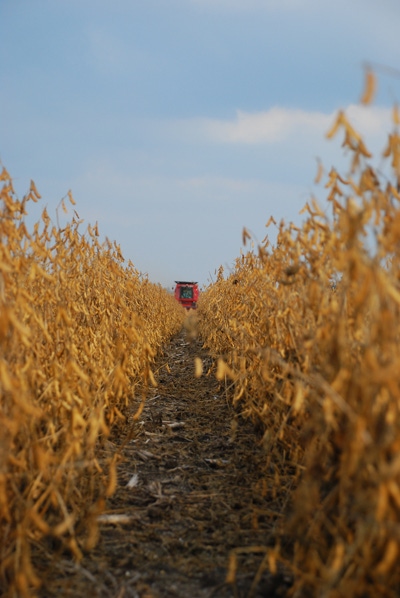September 16, 2011

A hard frost occurred early Thursday morning (Sept. 15) across much of central and southern Minnesota. The complete effects of this frost or freeze event may not be known for some time. However, most soybean and cornfields have not reached physiological maturity. Yield and quality in these fields were likely affected.
Beyond the minimum temperature and the duration of the freezing temperatures, many cultural and environmental factors will affect the level of damage. Late planting, long-season varieties, poor fertility or drainage and cool temperatures may exacerbate the effects of this early frost/freeze event.
In most crop species, a hard killing frost after physiological maturity has little effect on yields. Physiological maturity is defined as the point at which maximum dry matter accumulation has occurred in the seed. But crops are not ready for harvest at physiological maturity, since drydown usually takes a longer period of time. Soybeans are usually harvested at moisture contents of 14% or less.
Maximum dry matter accumulation of soybeans has been reached when:
All leaves are yellow and about 60% of the leaves have dropped from the plant
Pods are all yellow and more than 50% of the lower pods have turned brown
Beans within the pods have about 60% moisture, show little evidence of green color and may be shrinking
Soybeans are easily damaged by frost in the 28-32° F range. Temperatures of 28° F for any extended period of time can completely kill soybean plants. The frost that occurred on Sept. 15 resulted in varying degrees of leaf and plant damage. This damage ranged from only the top 20% of the soybean canopy affected in some fields to the more severe 50-70% leaf damage of the total soybean canopy in other fields located within south-central Minnesota.
The yield loss will be directly proportional to the plants' physiological growth stage. Soybean plants that are very near the point of physiological maturity can be expected to weather the freeze with little impact on yield. However, soybean fields that are only at R6 (full seed) with all green leaves will experience significant yield losses. Very late-planted or very long-season soybeans could experience yield reductions of up to 50% due to a longer freezing duration.
Frost indicators and green beans
How can you recognize frost-damaged soybeans? Watch for these characteristics:
Green or elongated yellow soybeans that shrink to smaller than normal size after drying
Reduced oil content and quality
Higher moisture level (by 1-2%) than indicated by a moisture meter
Slower field drydown
Soybeans left standing in the field may lose green color within two weeks of maturity, so allow for field dry-down if possible, even if the plants were only partially frosted.
Does the color of green soybeans change during storage? In a preliminary study done at the University of Minnesota by Extension Agricultural Engineer Bill Wilcke and others, green soybeans and normal yellow beans were stored and monthly color readings were taken for six months. The colors did not change significantly for either group; however, visual appearance of the pure green soybeans appeared to be slightly mottled at the end of the six-month period. Some growers believe that beans that are only slightly green will tend to lighten up with time.
A study conducted at the University of Minnesota indicated that if green beans were properly dried to low, safe storage moistures, they should keep in storage.
It may be desirable to try to screen out small green soybeans as a means to reduce potentially large discounts due to damage. If you are storing soybeans that require drying, be sure to dry them (at temperatures of less than 130° F) to a low moisture level in order to ensure safe storage. In the Midwest, the Midwest Plan Service generally recommends storage moistures of 12% or lower for clean, high-quality soybeans in aerated storage for up to one year. For damaged soybeans, the storage moisture content should be 11% or lower.
You May Also Like




